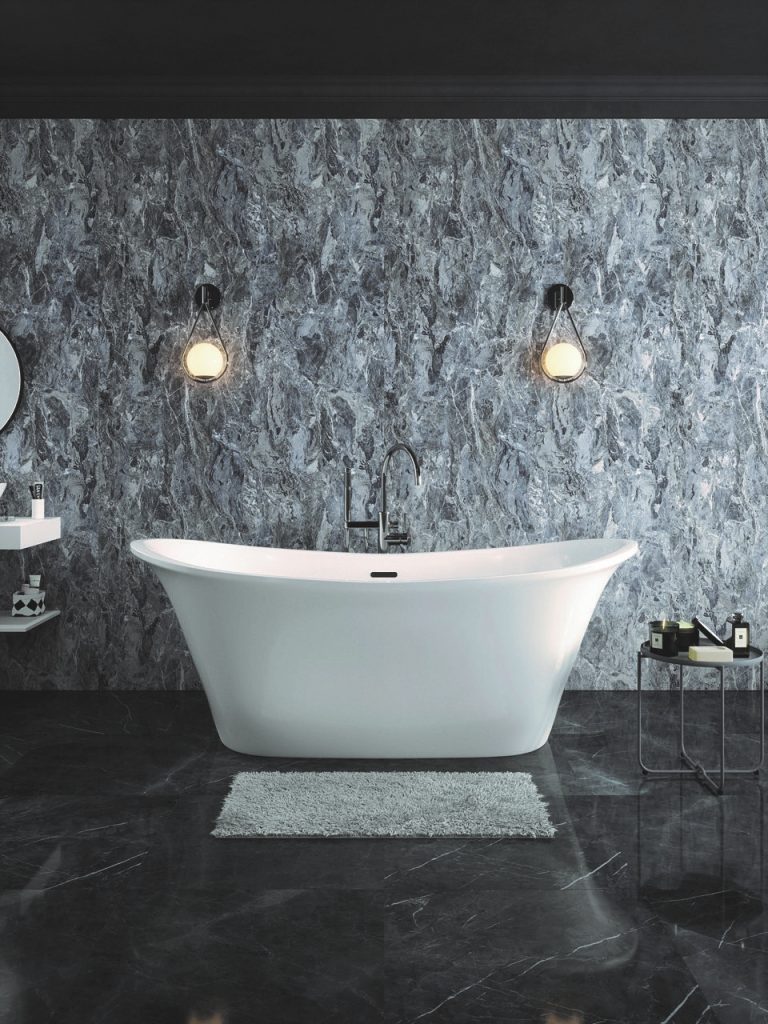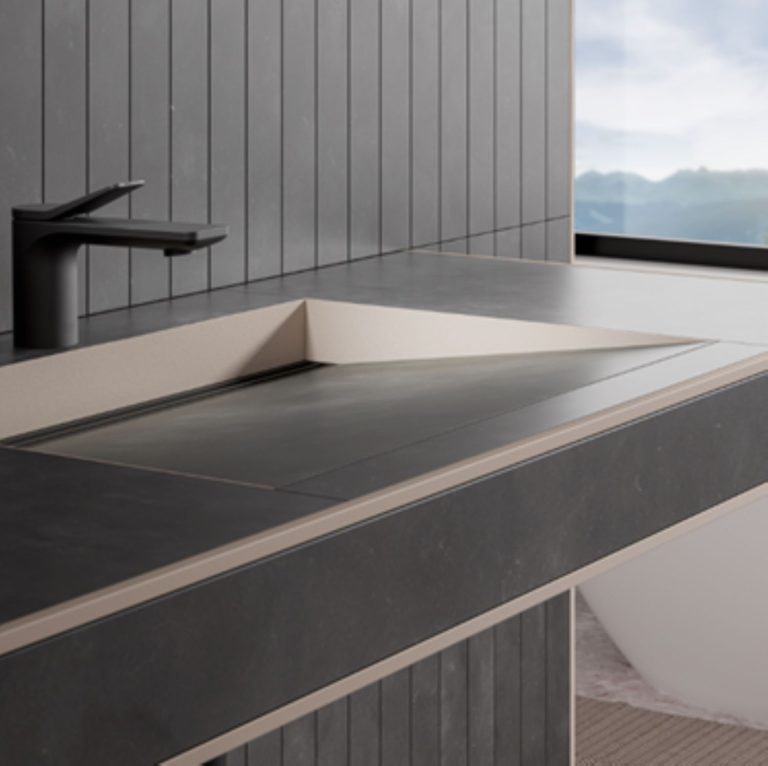Waterline has extended its bathroom offering with the addition of luxurious and durable Metrowall panelling.
Manufactured by Carysil using state-of-the-art technology and available in a variety of decors to suit traditional and contemporary interiors, Metrowall provides homeowners with a design-led, cost-effective and hygienic alternative to tiles.
Ideal for transforming bathrooms into sleek, spa-style spaces, Metrowall can help designers create a seamless, luxurious aesthetic. And, with no unsightly grout lines, Metrowall also benefits from being ultra-hygienic as well as easy to clean and maintain.
Completely waterproof, Metrowall is suitable
for a variety of applications, including shower enclosures, splashbacks and feature walls in bathrooms, wetrooms, kitchens and utilities.
Reflecting the latest interior trends, Metrowall panels are available in Gloss, Matte and Embossed finishes and an array of design-led colourways. Replicating the natural beauty of marble and stone, Gloss panels come in Bardiglio, pictured, Slate, Porcelain and Cream, while consumers can choose from Calacatta, Carrara, Granite and Cosmic decors in the Matte finish. Tactile Embossed panels are available in Grey, Linen, Cement and Carbon.
Quick and easy to install, Metrowall can be fitted in a matter of hours. Each panel measures 2240 x 1220 x 4.8mm and can easily be cut on site using standard woodworking tools with no re-sealing required. For added peace of mind, Metrowall comes with Carysil’s market-leading lifetime warranty against manufacturing defects.
For more information and to explore the full range of Waterline products, visit www.waterline.co.uk or call 03330 149 149.













